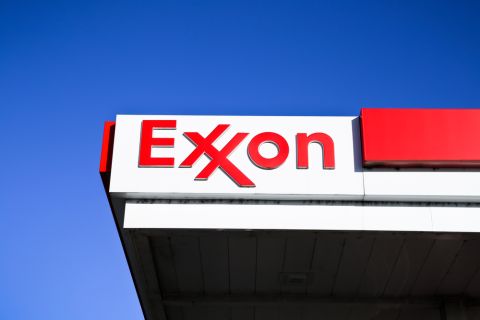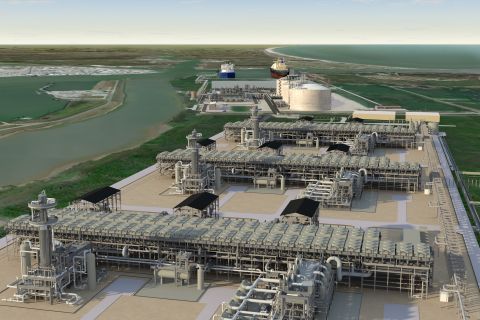Produced natural gas compositions can vary from resource to resource. In fact, they often vary within a single producing basin or field. Natural gas requires treating or conditioning designed specifically for a particular well or field before it can be injected into a pipeline to be transported to market.
And, as producers know, the capacity and efficiency of natural gas treatment can significantly determine the rate of production and the profitability for a well or field, so getting it right the first time can make the difference between profit and loss. With today's environment of low natural gas prices, hitting the bull's eye with treating methods is a high priority for all stakeholders.
In Texas, SouthTex Treaters, Inc. is focused on operations to remove contaminants from natural gas. Such service is increasingly needed due to the growth of shale play production.
Natural gas treating service involves converting original wellhead gas into a saleable product by separating contaminants and natural gas liquids from the gas stream, thus reducing the sales gas Btu from as high as 1,500 to as low as 1,000 to meet pipeline specifications. Also, wellhead gas typically contains excess water, carbon dioxide (CO2) and hydrogen sulfide (H2S), which must be removed.

From left, Paul, David and Luke Morrow confer at SouthTex headquarters. Paul and Luke continue to manage the business founded by their father. Source: SouthTex Treaters Inc.
Paul Morrow, president and chief executive of SouthTex Treaters Inc., based in Midland, Texas, has been fine-tuning such treating methods for producers throughout the U.S. for 15 years. He knows the importance of taking tailored gas treating to the field.
"My father was one of the founding members of the company in 1987," he says. "The company was founded for the primary purpose of providing contract gas-treating services and equipment custom designed for a well or field."
Since its formation, the family-owned company has grown to employ hundreds of people in Texas, Kansas, Louisiana, Arkansas and Colorado. Along the way, the company expanded its design, engineering and fabrication capabilities, as well as its inventory, to stock, construct, start up and operate many different types and sizes of facilities including amine plants, physical solvent plants, glycol dehydration units (TEG regenerators), condensate stabilizers, refrigeration plants (for dew point control), BTEX removal and catalytic oxygen removal units.
According to Mark Warren, director of marketing for the company, "New drilling technology and a lot of liquids-rich shale plays have kept the window of profitability open for gas production, despite low natural gas prices. There are also new export markets for natural gas liquids and liquefied natural gas coming online, and these products add value to the original gas stream."
The products also require stabilization and refrigeration, he says, adding, "But even if wellhead gas goes straight to storage for later processing, it almost always needs contaminant removal based on its composition, and that is the bulk of our business."
Amine-treating is used most often to remove CO2 and H2S, or acid-gas compounds, from natural gas. In this continuous process, acid-gas compounds are selectively absorbed from gas streams with high pressure and moderate temperatures.

The White River Dome plant in Meeker, Colorado, processes some 50 million cubic feet of natural gas per day to remove CO2. Source: SouthTex Treaters Inc.
Then, the regeneration process, with low temperature and high pressure, force the acid-gas compounds to desorb from the amine solution. The cooled solution is returned to the high-pressure absorber for removal of additional acid-gas compounds.
"We also design and build refrigeration and dew-point control equipment that is used to prevent condensation during pipeline transport," says Morrow. "The gas stream is dehydrated and cooled below any expected pipeline condition. The natural gas liquids are stabilized and the gas is warmed for transportation."
Elsewhere, condensate-stabilization equipment is used in fields such as the Eagle Ford shale play, where the gas fields produce a light hydrocarbon liquid product along with the gas. Typically, condensate is shipped in atmospheric-pressure trucks to avoid high vaporization losses.
Before shipment, the liquid must be stabilized by using heat and fractionation to set the liquid vapor pressure within acceptable limits. The light products are removed from the heavier hydrocarbons and can be used as fuel or for other purposes. The stabilized liquid is cooled before going to storage tanks.
New technology
Yet, not all treaters are alike. For example, BTEX components (benzene, toluene, ethyl benzene and xylene) and other aromatics must be removed from amine plant vent-stream emissions. SouthTex engineered and patented a BTEX removal technology that does the job at low cost and "it is virtually maintenance free," says Morrow.
"When we sell these systems, we also offer plant-installation services, startup assistance, ongoing technical support and customer service," he says. "With SouthTex, the people you start with are the people you finish with."
As a midstream operator, SouthTex has treated nearly 200 million cubic feet per day for clients, and has built treating facilities capable of more than 1 billion cubic feet per day. By learning from actually operating the gas-processing systems, the company has a good grasp of the type of equipment other processors want. As a result, the company sells an average of 30 amine-treating plants per year, along with liquids recovery plants, dehydrators, stabilizers and other related treating and processing equipment.

SouthTex’s patented BTEX-T.rex unit, which removes BTEX and aromatics from amine vent streams, operates nearly maintenance-free. Source: SouthTex Treaters Inc.
Diversification
The Morrow family spun off a new company in 2006, SouthTex Renewables, which operates several methane plants that collect gas from landfills. When gas is extracted from a landfill, it largely consists of 56% methane, 42% carbon dioxide, and 2% nitrogen, explains Morrow. After it is treated, the final product consists of about 95% methane, 4% nitrogen, and 1% carbon dioxide. From there, the gas can be sold into a pipeline.
"We felt that it was smart to divide SouthTex into two companies according to the nature of their work," explains Morrow. "The treaters came first. At the moment, SouthTex Treaters is the larger company, but Renewables is getting close."
During the past few years, SouthTex Treaters expanded its engineering and manufacturing capabilities to sell hundreds of gas-processing plants and plant components throughout the Barnett, Haynesville and Eagle Ford shale plays and in Kuwait and Colombia. Although the company continues to grow, its managers do not plan to take the company public.
"The continuity of ownership, leadership and experience at SouthTex has helped us create a culture of ethics, teamwork and personal excellence that shows in everything we produce," says Morrow.
"We have very little turnover, with employees and customers alike, and our environment of innovation has led to new patented technologies, like our BTEX-T.rex removal system, and carbon dioxide stripping of pre-treat solvent for landfill gas applications. We also have a patent pending for a vacuum air-stripping process for main solvent regeneration in landfill methane-gas treatment."

Going global
Going forward, both companies are looking for more exposure to business outside the U.S. "We are always working to develop third-party plant and equipment supply projects in foreign countries and lately have worked into some potential projects in Australia and Turkmenistan," says Morrow. "We are also always on the lookout for contract treating projects, where we bear the capital outlay, construction and operation of a plant ourselves."
As an operator, the company charges a fee as a percentage of its client's revenue, and is thus exposed to commodity prices. But with natural gas liquids value rising, and tracking oil prices, the risk comes with much reward.
"Every time we search, we find the opportunities are larger than we suspected. So we continue to add capital into our business. We invest in extensive training for our people and we continuously streamline shop expansion to accommodate multiple projects more efficiently," says Morrow. "We plan on probing the limits of these businesses that we are in."
Recommended Reading
Exxon’s Guyana Gas Project a “Win-Win,” Set for Hook-up by Year-end ‘24
2024-04-26 - Exxon Mobil Corp. CEO Darren Woods said the company’s gas-to-power project in Guyana as a “win-win proposition particularly for the people of Guyana” when completed and hooked-up by year-end 2024.
Segrist: The LNG Pause and a Big, Dumb Question
2024-04-25 - In trying to understand the White House’s decision to pause LNG export permits and wondering if it’s just a red herring, one big, dumb question must be asked.
Texas LNG Export Plant Signs Additional Offtake Deal With EQT
2024-04-23 - Glenfarne Group LLC's proposed Texas LNG export plant in Brownsville has signed an additional tolling agreement with EQT Corp. to provide natural gas liquefaction services of an additional 1.5 mtpa over 20 years.
US Refiners to Face Tighter Heavy Spreads this Summer TPH
2024-04-22 - Tudor, Pickering, Holt and Co. (TPH) expects fairly tight heavy crude discounts in the U.S. this summer and beyond owing to lower imports of Canadian, Mexican and Venezuelan crudes.
What's Affecting Oil Prices This Week? (April 22, 2024)
2024-04-22 - Stratas Advisors predict that despite geopolitical tensions, the oil supply will not be disrupted, even with the U.S. House of Representatives inserting sanctions on Iran’s oil exports.




